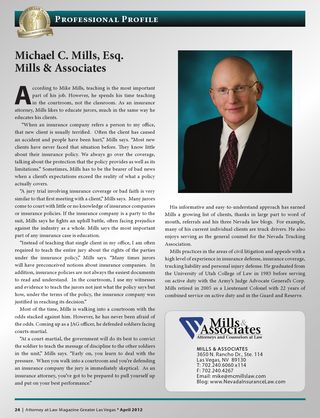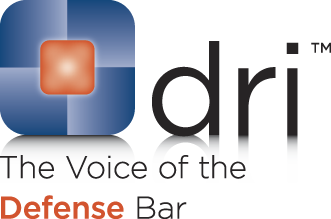It’s bound to happen eventually. A lawsuit gets filed. The insured is served with a summons and complaint. But rather than notifying the carrier, the insured defendant does NOTHING. Under Nevada law, if a defendant does not file an appearance within 20 days after service, the non-answering defendant is in default. See N.R.C.P. 12(a)(1). Fortunately all is not lost.
Defaults are governed by N.R.C.P. 55 which reads:
RULE 55. DEFAULT
(a) Entry. When a party against whom a judgment for affirmative relief is sought has failed to plead or otherwise defend as provided by these rules and that fact is made to appear by affidavit or otherwise, the clerk shall enter the party’s default.
Between the time when 20 days have passed until the time when the clerk takes action to enter default, the exact status of the case is vague. Keep in mind that there is no valid default until the clerk actually signs and files the form entitled “Default”. Opaco Lumber & Realty Co. v. Phipps, 75 Nev. 312, 340 P.2d 95 (1959). A party in technical default has a couple of choices. That party could simply appear and file a tardy Answer. But the tardy Answer would be subject to Plaintiff’s Motion to Strike because of the technical violation of the rule. Perhaps the better solution would be to appear and file a Motion to Enlarge Time to Plead and to Set Aside Technical Default on an Order Shortening Time and attach thereto a proposed Answer. Either way you go, if you do it in a timely fashion, it is unlikely that the court would take the drastic step of entering a formal Default since it is in effect an “admission by the defending party of all material claims made in the complaint . . . resolv[ing] the issues of liability and causation and leav[ing]open only the extent of damages.” Lamastro v. Am Family Ins. Group, 124 Nev. Adv. Op. 89, 194 P.3d 339, 345 (2008). This technical default is generally the simplest type of default to cure.
After a technical default has happened, the next step is to turn the technical default into an formally entered Default. There are two ways for this to happen. The first would be to wait for the clerk to determine by happenstance that 20 days have passed since service and then the clerk enters Default of its own volition. Normally, this doesn’t happen. More often, the Plaintiff files an Application (sometimes called a Praecipe) of Default. In the Application, the Plaintiff points out to the clerk that proper service has been perfected and that 20 days have passed. The Application then asks the clerk to enter Default. Normally, the Plaintiff will submit a Default form for the clerk’s signature simultaneous with the Application. If there is no signature by the clerk, there is no Default. Jacobs v. Sheriff, Washoe County, 108 Nev. 726, at 728, 837 P.2d 436 (1992).
The cure becomes more difficult to obtain once this formal Default is entered by the clerk. But still, not all is lost. N.R.C.P. 55(c) states that the court may set aside an entry of default for “good cause shown.” As soon as the insurer becomes aware of an entry of default, defense counsel should be retained to move the court to set aside the default or to get a stipulation with the opposing party to set it aside.
The standard for setting aside a default is lower than the standard of setting aside a default judgment (the default judgment comes later in the process). See the case of Sealed Unit Parts Co. v. Alpha Gamma Chapter of Gamma Phi Beta Sorority, Inc. of Reno, 99 Nev. 641, 668 P.2d 288 (1983), overruled on other grounds; Epstein v. Epstein, 113 Nev. 1401, 950 P.2d 771 (1977); and Rae v. All Am. Life and Cas. Co., 95 Nev. 920, 605 P.2d 196 (1979). Furthermore, the phrase “good cause shown” includes many things such as mistake, inadvertence, surprise, and excusable neglect. See Intermountain Lumber and Builders Supply, Inc. v. Glens Falls Ins. Co., 83 Nev. 126, 424 P.2d 884 (1967).
Courts often lend a listening ear when counsel comes asking that a formal Default be set aside. In the case of Howe v. Coldren, 4 Nev. 171, 174 (1868), the Nevada Supreme Court explained the logic behind setting aside a default where good cause is shown. The court said:
If there is a refusal to set aside a default, a ruinous judgment may be sustained against a party who, upon hearing, might have interposed a perfectly good defense. By sustaining the default, he would forever be debarred the right of a hearing. If, then, a nisi prius court refuses to set aside a default when a party shows with reasonable certainty that he has a good defense, then he has only been guilty of carelessness and inattention to his business, but no willful or fraudulent delay, it would be highly proper even for an appellate Court to come to his relief if the lower Court refused it.
Other Nevada courts have followed this same thinking. In the case of Hotel Last Frontier v. Frontier Property, 79 Nev. 150, 380 P.2d 293 (1963), the Nevada Supreme Court said:
Finally, we mention, as a proper guide to the exercise of discretion, the basic underlying policy to have each case decided on its merits. In the normal course of events, justice is best served by such a policy.
Obviously, don’t let Defaults lie. The defendant must take action as soon as possible in order to protect his rights because things can only get worse from here. In an upcoming post, we will discuss how Defaults become Default Judgments and the very serious consequences that can befall those who don’t get the Defaults set aside.
 Follow
Follow Email
Email


